How do I even begin? A muddy spot in urban wilderness
I have a brand new little house surrounded by mud and urban wilderness.
The mud is from the nasty combination of construction in summer and a whole lotta rain. There is runoff from a neighborhood street. Plus, I wouldn't let the builder put in grass seed 'cos I wanted wildflowers in lieu of lawn, and winter's onset is the time to put in wildflower seed in northern New England.
The urban wilderness is a wondrous combination of poplars, butternuts, birches, goldenrod, sumac, oaks, and white pines. Those are all keepers, as are the birds, squirrels, deer, and whatever else drops by. Just not the neighbors' cats.
My little property is Certified Wildlife Habit (Natural Wildlife Foundation), and I want to extend the natural and wild look where there would normally be yard with lawn and ornamentals.
I am intimidated by all the bareness and what seems to need doing. I didn't think it would be an especially large project, but maybe it is.
At any rate, I have no idea how to begin thinking about what I should do with the space, what belongs where, how to think of plantings, any of it. And I have the whole snowy winter before me to get planning.... HELP! Get me started!
Photos and more details in subsequent post(s).
Comments (45)
gardengal48 (PNW Z8/9)
4 years agolast modified: 4 years agoAs Yardvaark has indicated, you approach it like you would any landscaping project......mapping the property, site evaluation and developing a layout, including access, how you will use or interact with the garden and any outdoor entertaining areas.
You do not need to focus on just wild and/or native plants. All that is necessary to qualify for a certified wildlife habitat is nesting or denning areas, food sources and water. Many typical garden ornamentals can also provide these. My entire island (population around 25K) is a Certified Wildlife Habitat, one of 29 US cities that qualifies for that designation and while there are plenty of natural or green spaces, there are also many very groomed and tidy gardens as well.
Related Professionals
Willowick Landscape Architects & Landscape Designers · Damascus Landscape Contractors · East Lake-Orient Park Landscape Contractors · Quincy Landscape Contractors · Ronkonkoma Landscape Contractors · Roseville Decks, Patios & Outdoor Enclosures · Rolling Meadows Stone, Pavers & Concrete · Apollo Beach Landscape Contractors · Duarte Landscape Contractors · Coral Shores Window Contractors · Fond du Lac Window Contractors · Northridge Window Contractors · Hampton Bays Landscape Contractors · Bakersfield Swimming Pool Builders · College Station Swimming Pool BuildersChristopher CNC
4 years agoThe very first place to start is how will you and any other humans involved use and move through this space. Defining that flow of walkways and needed open space first will tell you where the planted spaces go. Getting the planted spaces defined will then help inform you what gets planted where by all the other factors and site conditions involved that need to be pondered for right plant for the right place because that is just as important for a natural wild garden as a standard landscape.
tangerinedoor
Original Author4 years agolast modified: 4 years agoPhotos... then I can get back to the wonderful comments I see above.
Photos were taken today, Thanksgiving 2019.
The east side of the house from the north looking south, two angles
:
tangerinedoor
Original Author4 years agolast modified: 4 years agoThe south side of the house..
Looking west:
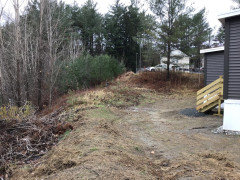
Looking east: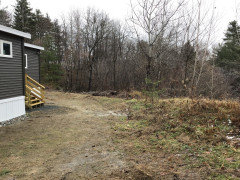
mad_gallica (z5 Eastern NY)
4 years agoUnderstand that you are planting an unnatural garden that is going to need as much tending as any other garden because you are fighting nature just as much. It is not a matter where you spread your seeds, and the flowers, birds, and butterflies live happily ever after.
What wants to be there are trees. However, before the trees can grow large enough, and shade out other plants, the opportunists move in. Some are native, but most are exotics like shrub honeysuckles and multiflora roses. They will form a dense, impenetrable mat that is not human-friendly. You have to decide how you are going to handle this. The easiest way is a lawn mower. The other way is to hand weed them out.
tangerinedoor
Original Author4 years agolast modified: 4 years agoThe west side of the house..
From the south

From the north:
tangerinedoor
Original Author4 years agolast modified: 4 years agoNorth side of the house, facing west:

littlebug zone 5 Missouri
4 years agoI agree with mad. Whatever used to be there, and whatever is growing right next to your yard, will be determined to grow there. And weeds.
Do you have hours and hours to devote to this - every week? And the equipment? A yard of wildflowers sounds romantic, but establishing and maintaining it is a massive project.
tangerinedoor thanked littlebug zone 5 Missouritangerinedoor
Original Author4 years agolast modified: 4 years agoConsiderations:
- Zone 4b-5a
- the berms are designed and required by the town. No changes.
- The two catch basins were designed and required by the town. No changes.
- water on the lot is going pretty much where it's supposed to go
- The house is solar, netZero. So, no additional tall trees on the south.
- The remaining trees stay. They keep the woodland flavor of the lot.
- The muddy parts of the lot are what I need to figure out most.
- I want to attract butterflies and birds
- I have an idea that a cluster of mahonia might work somewhere
- near the mailbox might be a good spot for a high-interest deciduous tree
- I'm wanting year-round interest (e.g. bright berries or low evergreens in winter)
- The brush piles stay. They were actually to prevent people and animals falling down a 90 degree cliff, soil erosion, etc. Coincidentally, it's good habitat. I plan to cover it with fast-growing vines with color interest (e.g. Virginia Creeper), or other suggestions.
- I have most issues with the east and south sides.
- The lot has a microclimate! It gets twice the snow of neighboring lots (up to my thighs last winter), the snow really sticks around, didn't thaw until late April, and runs about 5 degrees warmer than neighbors in summer.
- Low maintenance!
- I plan to get culverts for an O garden to hide the (lender-required) skirting
Like this:
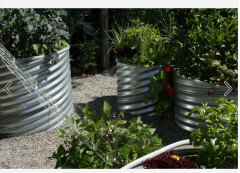
The lot used to be this kind of wild: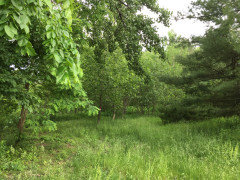
- tangerinedoor thanked littlebug zone 5 Missouri
- tangerinedoor thanked mad_gallica (z5 Eastern NY)
tangerinedoor
Original Author4 years agolast modified: 4 years agoOn YardVaark's input. Thanks so much for your comments!
Yep, I have the same concern about the wildflowers, not least because the hay the builders dropped on the lot left grass seed everywhere. Also, the water flow is moving seeds around. As a result, I've not used my entire bag of wildflower seed; I thought I'd wait and see how the lot works.
Drainage and berming seem to work as intended. The town engineer designed it and my builder bulldozed so runoff would head where it's supposed to. However, if I could, I'd like water runoff to slow down on the south side of the house using plantings.
No hardscape is planned, though I might have to level spots for the culverts.
There is a batch of goldenrod on the lot. I don't feel compelled to remove it, at least for now.
Let me know if different photos would be helpful.
tangerinedoor
Original Author4 years agolast modified: 4 years agoYo, GardenGal... Thanks!
How lovely that you get to live on a whole island that is Certified Wildlife Habitat. Figures it's in the PNW.
I'm fine with a percentage of my lot being not wild. For starters, I like cut flowers. Optimum in this area of northern New England (because of prodigious weeds and very short growing season) are raised beds, usually boxed somehow or other. I plan to use discarded culverts for this (like my photo above). These would be great for cut flowers and whatever else...
I will also likely have to put cultivated plants along the pathway to my front door. Otherwise I'll have a mess. The dirt abutting the path gets very wet. Suggestions?
I also envision some containers, since I LOVE the colors of New Guinea impatiens.
tangerinedoor
Original Author4 years agolast modified: 4 years agoChristopher C! Thanks for taking precious holiday time to address my issues!
Yep, that's kinda where I am.... deciding where I need planting, etc. I need to be working on the south and west, but it sounds like I need to think about creating sub-spaces within the larger spaces, and going from there. I'm not sure how to do that! How to lay it out... how to think about different spaces.
I've had a garden before, but always for pre-owned houses (in the PNW), so I wasn't making any basic decisions. This is the part I guess I'll need help with first.
gardengal48 (PNW Z8/9)
4 years agoLOL!! Some of the wildlife is much less appealing than others. Deer are a real concern as there are no natural predators and hunting is prohibited. And it's an island so no easy escape to other territory! Coyotes are an issue as well as are marauding, half tame raccoons (fed by misinformed but well meaning neighbors). But there are lots of birds including bald eagles, great blue herons, cormorants, Anna's hummingbirds, jays, etc., a wide assortment of small mammals and rodents. and all manner of amphibians and a few snakes.
tangerinedoor thanked gardengal48 (PNW Z8/9)tangerinedoor
Original Author4 years agoMy "this kind of wild" photo, while appealing to me in the original state, is impractical for my house, since a bunch of the lot has to be clear for solar. However, I'm all about having wildness pile up over the dead brush, and lower-storey shrubs nearer the house..
NHBabs z4b-5a NH
4 years agoIn the areas your drainage goes to, if there are ponding areas to allow for water infiltration, consider the deciduous native winterberry holly, Ilex verticillata. Pollinators love the inconspicuous flowers in summer, and the bright red berries decorate the bare branches into some point in winter. A couple of other ornamental, hardy and ornamental native shrubs for wet areas include two damp-tolerant deciduous Rhododendrons, R. canadensis aka rhodora, which blooms a light lavender in early spring and R. viscosum aka swamp rhododendron, which has pink or sometimes white flowers in July.
As Mad Gallica said, in New England unmowed areas want to return to forest, so you will need to mow a couple of times a year at a minimum. I would start with grass to hold the soil, and plan beds along the foundations and where you will see them from indoors from commonly used windows, perhaps from the kitchen sink or near a favorite chair or what you will see from your bed. Then live in the house a bit and see how you move around the property. Do you want grassy paths or mulch paths or gravel paths that allow you to walk where you want and avoid mud?
tangerinedoor thanked NHBabs z4b-5a NHNHBabs z4b-5a NH
4 years agolast modified: 4 years agoAfter you have been there a while, put in paths where you want to be able to walk easily and then plant the rest. You will need to remove weeds regardless as there is always a big set of weed seeds in the soil since they can rest in waiting for preferred growing conditions for upward of 20 years.
Consider instead of scattering your wildflower seeds, start them in pots and then transplant into the ground once they are large enough to compete with weeds. One of the issues for many who haven’t gardened much with wildflowers before is that once they scatter seeds and things start sprouting in spring, they don’t know what are wildflower plants and what are weeds, often nonnative, that you want to remove so that they don’t outcompete the wildflowers you want. You also want to be careful with “wildflower” seed mixes as many contain plants that aren’t native to New England or sometimes even to this continent.
PS - If you enable messages (go to your My Houzz page) I may be able to offer you some native wildflower seeds. I am in central NH.
tangerinedoor thanked NHBabs z4b-5a NHChristopher CNC
4 years agoStylin' little house. I like it. The door looks blue to me. Check out Valspar's 'Marigold'. You might like it.
What mad_gallica said is true, if a bit harsh. More important is her second comment, "In my book, that's lawn." That kind of lawn is prime wildlife (butterflies and bird) habitat. It's all about your mowing regimen and what you are mowing for. And a lawn mower is not the only way to chop things down.
So go ahead and throw out all your wildflower seeds in places that are not likely to get any foot traffic and don't worry about the weeds. It is all going to get chopped down next year and you want to get the wildflower seeds into the seed bank of your soil. Your soil already contains the seed bank of the naturalized grasses and wildflower in your area. Regular mowing or cutting will favor those over time and inhibit the horrible invaders mad_gallica threatened you with.
If you are serious about creating more wildlife habitat, you are entering an active relationship with nature as the caregiver of the land. It Is not an abdication of work or responsibility. You will be the vessel nature uses to care for this piece of earth.
The up front work for a native garden can be just as intensive as for a typical landscape depending upon your approach. The good news is that over time, if you establish a functioning plant community, the invaders become fewer and the input to maintain it gets easier.
Step one is still determining human use and movement through the space to determine the planted and wild cultivated spaces. But if you are going to be having thigh high snow, another first step would be to buy a good illustrated field guide for New England wildflowers. Open that book. Look for pretty. Read the descriptions and habitat needs of all the different plants. There won't be a test. This is for day dreaming on thigh high snow days, but you are now a student who must pay attention to the ways of the land.
tangerinedoor thanked Christopher CNCtangerinedoor
Original Author4 years agolast modified: 4 years agoVaried responses:
If you enable messages (go to your My Houzz page) I may be able to offer you some native wildflower seeds. I am in central NH.
Done.
The door looks blue to me. Check out Valspar's 'Marigold'. You might like it.
The door IS blue. Glad you noticed it might need something different. I actually chose a tangerine color at first, then sunflower, but decision-making on the front door was made impossible because I never saw the house or the siding outdoors until the evening before it got here.
Upshot? I plan to re-paint the front door in the spring. I don't like this color. But I might just get back to tangerine. I have a few other colors I'm thinking of.
So go ahead and throw out all your wildflower seeds in places that are not likely to get any foot traffic and don't worry about the weeds. .....You want to get the wildflower seeds into the seed bank of your soil.
Brilliant. You've decided for me. I'd better hurry up before the ground freezes.
Consider instead of scattering your wildflower seeds, start them in pots and then transplant into the ground once they are large enough to compete with weeds.
I had 't thought of that, but I might experiment with a batch inside in early spring. My house is soooo little, it's hard to know where to put them.
And if I don't get out the seeds before the ground is hard, I'll use this method!
If there are ponding areas to allow for water infiltration, consider the deciduous native winterberry holly, Ilex verticillata.
This'll be my first thing to place! Sounds perfect.
I would start with grass to hold the soil....
No choice here... there's grass out there despite the great lengths I went to NOT to have any.
....Ornamental native shrubs for wet areas include two damp-tolerant deciduous Rhododendrons, R. canadensis aka rhodora, which blooms a light lavender in early spring and R. viscosum aka swamp rhododendron, which has pink or sometimes white flowers in July.
I had in mind to do a cluster of rhodies in an awkward corner, and now you've given me an idea. I'll have to check them out.
If you are serious about creating more wildlife habitat, you are entering an active relationship with nature as the caregiver of the land.
This is what I'm hoping for... The neighbors are going to be appalled when they find out I seem to be a bear magnet (not from a home, just out and about).
I don't know much about birds or butterflies yet, but I was talking to trees (and they talk back) years before The Hidden Life of Trees was published. I'm friends with several on this lot. I'm still learning species, though.
Interestingly, I don't have any maples. I'll have to figure out why.
You also want to be careful with “wildflower” seed mixes as many contain plants that aren’t native to New England.
I selected a Vermont supplier (American meadows) with seeds specific to this zone, so I'm hoping to avoid invasives. But you're right, not sure how to protect myself from wayward seeds. Same with grass: we have PNW grass everywhere, just like the rest of the country.
...plan beds along the foundations and where you will see them from indoors from commonly used windows...
After comments here, I'm thinking I'll start with along my pathway, and 'round the back, which is where I have all the windows looking out over a muddy mess.
It may take all next summer to round up some remnant culverts for raised beds, but my builder is all excited about this concept: he wants some too! Industrial design is a "thing" a round here, very much suited to the "workaday" town I live in. Anyway, this project might not get done first.
This is for day dreaming on thigh high snow days, but you are now a student who must pay attention to the ways of the land.
Yes!
Stylin' little house. I like it.
Her name is Itsy Bitsy. She's become quite the tourist attraction, so I have to do justice to her wild space.
tangerinedoor
Original Author4 years agolast modified: 4 years agoFor a suitable app, would you recommend Plan Your Garden OR Garden Puzzle? I'll get one so I can play all winter...
Aha! They're the same thing!Christopher CNC
4 years agoHale Mana and Hale Mini 'The Crooked Shed' in the wild cultivated gardens. Over the course of the winter, finished around the first weeks of February, all the herbaceous meadow plants are chopped and dropped to the ground with long handled hedge clippers.
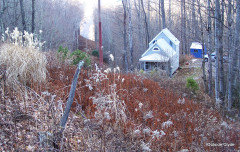 tangerinedoor thanked Christopher CNC
tangerinedoor thanked Christopher CNCSkip1909
4 years agolast modified: 4 years agoI think you should look for nearby county, state, or national parks, wildlife management areas, preserves, certified wildernesses or forests, etc. The closer to your house, the better. Look for similar topography, and see what is growing there. Look at areas adjacent to infrequently mown fields, parking lots and buildings, the grass should be about 4ft tall. Some will be filled with invasive weeds but some will be higher quality and that is what you should aim for. They will almost always have a large component of tall grass, so tall competitive native grasses should be part of your plan if you hope to have large areas occupied solid with vegetation.
In my area, the woodland understory is almost completely composed of Clethra alnifolia and blueberry colonies. At the wood edge there is invasive japanese barberry and japanese honeysuckle, but on closer inspection you can find nannyberry viburnum, sweetfern, sassafras, northern bayberry, arrowwood viburnum, spicebush, and more. I really like the approach the parks people take here. The wood edge is this wall of shrubbery, saplings, trees, and vines, and adjacent to that there is a corridor of mown grass 4-6ft wide, and then the tall grass meadow occupies the open space. For a homeowner this is practical because you can get between the woody stems to chop down most of the trash invasives in the wood edge with a string trimmer w/ brush blade and hand pruners.
I think you have to get realistic about what to expect from a "wild" planting, especiallly the first year. Clump forming warm season grasses are going to need to be a big component to support and shelter the other perennials and take up space. Otherwise you are going to be more susceptible to weed invasion and rhizomatous colonizing plants like canada goldenrod and mugwort. The first year is going to be a bit dull because you need to cut/mow more frequently to favor the new seedlings, stop weeds from going to seed, and kill woody plants. Look at the planting and maintenance guides from big seed houses and if you really want to delve deeper I recommend reading some books on the subject. I like Planting in a Post Wild World by Claudia West and Thomas Rainer, Garden Revolution by Larry Weaner and Tom Christopher, and The Living Landscape by Doug Tallamy and Rick Darke to get started.
Dont be scared by naysayers, what you want can be done but it will require planning and routine maintenance, and you might have to sacrifice some of your ideals to come up with a manageable plant community. Your outings and observations might change your mind and simplify things, for example if you find a spreading plant that would easily fill large swaths. You need to understand your land is on a growth trajectory and how to identify, set, and modify that trajectory. The plant community will almost never be static, it will and should change from year to year as the plants display varying degrees of maturity.
tangerinedoor thanked Skip1909Yardvaark
4 years agoA homeowner has to move around the yard to tend, maintain and enjoy things. Typically, that's easily solved with the liberal addition of the mowed lawn -- where one can walk around anywhere. How are you going to solve it? -- a mulch path? ... stepping stones? ... bare dirt? Once your yard gets filled with nature, you're not going to be able to move through it except with difficulty, and possibly a case of chiggers.
tangerinedoor thanked Yardvaarktangerinedoor
Original Author4 years agolast modified: 4 years agoThanks, Yardvaark, for the tip. I hadn’t really thought about a pathway. I guess I have to include that in my planning list.
For now, I plan to keep the north and east sides carpeted with pine needles. That’s more or less how they were before they cleared my lot, and they’ve shed a lot this fall!
Skip, I already have a large patch of goldenrod. I’m not sure yet if this is a bad thing. There’s also poison ivy aplenty, but I’ve already successfully managed to make inroads with a vinegar and salt solution.
Before I bought it, the grass was cut by the owner. It grew all over jungle in just a couple of months right after I bought it. The poor guy clearing the lot bid the project in December. He almost had a heart attack when he saw it in May, because he had about 5 times more work than he planned. LOL.
The lot also had some shrubby things with dark berries, so I feel fairly confident the lot can sustain those.
That’s a great idea about looking at parks. I’ve also been looking along the interstate, which is partly mowed, partly wild.
I’ve got to get reading! Thanks for the recommendations.
tangerinedoor
Original Author4 years agoThe Kindle Living Landscape sample had me mesmerized in 5 seconds, so I've splurged and got myself a copy. Price of half a shrub at a nursery....
Sigrid
4 years agoI haven't noticed that NNE has a lot of meadow and most don't do well with a lot of sun, which might not be what you have on that lot. . With all those pine trees in NNE, you probably have shade with acidic soil. The NNE look tends to be low-growing groundcover shrubs, like low-bush blueberries and bearberry with ferns and shrubs. There are some tiarellas that are ground covers. I like Actea with ferns.
Add some not-so-high shrubs for interest. For native flowering shrubs, try mountain laurel, American (Canadian) elderberry, and some viburnums.
I haven't had much success growing native seed in my yard. I'm trying in pots with grates to keep out the critters. If you don't have something growing, you'll get weeds. I even got some poison ivy.
What I would do in the winter is to make a plan, start with the compass points. Think about sun and shade. Then think about paths and views. Read up on native plants and what kind of sun/shade they like. If you live in Maine, I highly recommend, "Native Plants for your Maine Garden" by Maureen Hefferman. But go to your library, use interlibrary loan and read up on native gardening. Pay a lot of attention to NE and not much to native prairies in great plains states or Pacific states. My bet is that if you live in NH or Vermont, what's native to Maine is the same.
If you have very soggy ground for too long, my experience is that birch soaks it right up. If it's a small spot, too close to your house, a water garden might work.
This is the kind of look you should be aiming for:

or this (fall, so the ferns are golden)
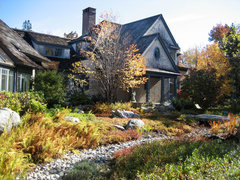
You note these looks need paths.
tangerinedoor thanked Sigridtangerinedoor
Original Author4 years agoGrowing philosophy... when you'r trying to plant understory, shrubs, and smaller trees (e.g. 10-20 feet), do you plan for clusters or just a solo? This wouldn't be so much for beds as transitions and verges...
tangerinedoor
Original Author4 years agoSigrid.... What do you mean by NNE and NE? Northern New England? New England? Northeast corner of a lot? Maybe this is a dumb question, but inquiring minds want to know. Then I can apply your suggestions, 'cos they look very applicable!
tangerinedoor
Original Author4 years agoNH Babs....
If you're starting shrubs from seed, you start them indoors? Like, when, for your area? January? How large would you grown them before you transplant?
And how many do you normally start to get one that might survive?
I'd better get my act together here....beesneeds
4 years agoWhat butterflies and birds are in your neighborhood? What furry critters?
If you are building a wildlife habitat, you might want to find out what the wildlife is and what habitat they like before other more human considerations.
tangerinedoor thanked beesneedsSkip1909
4 years agoTangerinedoor, look up wintersowing. You cut milkjugs, 1L, and 2L soda bottles in half heightwise, fill with 3-5" of soil, plant your seed, tape it shut, and in spring you have plants. For large nuts and acorns use a half gallon milk jug and fill it with more soil. The outdoor cold and natural temperature fluctuations during winter and spring help germinate the seeds.
tangerinedoor thanked Skip1909tangerinedoor
Original Author4 years agoI'm having to read these posts over and over, 'cos every time I learn more stuff, I have a slightly different take on what you're saying.... Steep learning curve.
Are y'all understanding that I'm after not so much a "garden" as a "wild yard"?tangerinedoor
Original Author4 years agoWow, Skip. That is sooo clever. Now I'll have to figure out where to get my hands on plastic bottles (ummmm....I use the glass ones from the local dairy!), but where there's a will, there's a way.
NHBabs z4b-5a NH
4 years agoTangerinedoor, I mostly start shrubs from cuttings, and haven’t had much luck starting them from seed, though I have started trees from large seeds like acorns or walnuts. I am no expert in propagation, so you may well do better than I will.
tangerinedoor thanked NHBabs z4b-5a NHChristopher CNC
4 years agolast modified: 4 years ago"Are y'all understanding that I'm after not so much a "garden" as a "wild yard"?"
I think most everyone who has replied here understands that. But the idea of a 'wild yard' is as open ended and diverse as your ecosystem will allow. My question to you is, do you fully understand that a 'wild yard' requires an active land management plan that only has marginally different goals, plant choices and practices than conventional gardening?
You have a blank slate right now. The place to start is still the same. How are people going to move through this space? How do you get from the car to the front door or back stairs and on and on. What is the traffic pattern around the entire property for carts and mowers and wheelbarrows and people?
Get a pencil and piece of paper. Make a rough sketch of the house on the lot and mark your traffic patterns. Those are the paths and open spaces. The rest is wild cultivated.
Go outside and walk your future garden every opportunity you can. Starting Now! Get to know the plants that are growing there already and the plants that will grow there if you add them in.
Perhaps this will help. There are twelve years of musing on creating wild cultivated gardens at Outside Clyde. It will give you something to read on cold snowy days. You can start at the beginning in 2007 and see what happens.
Or maybe you could start a new post with pictures and as much info as possible for one specific section of the property that you want to address first.
tangerinedoor thanked Christopher CNCtangerinedoor
Original Author4 years agoGreat, Christopher. That's exactly what I was hoping: everyone's on the same page. And now I see from everyone that my fantasy of a "wild yard" is a bit (hmmm...a LOT) more work than I anticipated.
However, it also seems as though my little spot of land is telling me that's what it wants, so I'm here to facilitate in whatever way I can. A bunch of that right now involves observation—including the whole year of walking around the lot before the deal was signed and about 15 visits (no exaggeration) with my builder—about how the lot "works": where the birds go, how the trees relate to each other, what seedlings are getting dropped successfully by trees, etc. And then there's all the salt the snow plows just plowed onto my lot: so much for anything spectacular growing in those spaces. Most importantly, what the changes are now that there's a house on the spot (a bird slammed into a window the very first week) and 2 very large trees have been removed.
I think this is what you're reminding me as well.
Yes, I intend to focus on a couple of spots for the first year. One follows the path to the front entrance (more cultivated), and the other is out the back window (on the wild side). Would y'all prefer I identify those and ask questions in a new post? I rather thought I'd keep them in this post since they are of a piece with the above.
I am now deep into The Living Landscape recommended by Skip.
******Every sentence y'all have written above is immensely helpful! You are my new guidebook!
******All in all, I will agree that I'm a rank novice about gardening and tending spaces, however I'm not new to being in wild places, observing, and interacting. I want to draft off this sensibility I already have.
I will start drawing....beesneeds
4 years agoBird strikes on your window is an easy fix. They do it because they don’t see the glass. There’s a variety of things you can do to visually break the invisibility wall for the birds.
There are window treatments and clings specifically to deter bird strikes. Some folks go more DIY and hang shiny ribbons or things outside the window.
tangerinedoor thanked beesneedstangerinedoor
Original Author4 years agoThanks, beesneeds. I'm thinking the birds got the word around, 'cos it didn't happen again. Yep, they weren't expecting a house there.
Julie Mikalson
4 years agolast modified: 4 years agoI'm guessing you'll need a good deal of mulch. We all do. See if ChipDrop.com is active in your area. You can get a huge pile delivered, which can protect any area from weeds while you are planting out each section. I like a lot of the ideas here. (I sure miss the old GardenWeb. Too hard to find stuff under the current owner. Yes I've sent them a plea for help)
tangerinedoor thanked Julie Mikalsontangerinedoor
Original Author4 years agoI'm reading over your posts as I consider where to proceed next. The comments have aged well and given me great instruction, even though we seem to be living in a very different world than just a few months ago.
Where I've been going with it...
I seem to have water running in all kinds of places I didn't expect (though not under the house), so, first things first, I'm digging small channels to see where water goes, and thus come up with a clearer idea how to map out a good drainage plan. Trial and error. I might have to hire someone to help me with this.
And, I'm having a deck built. This will take up a significant chunk of space and create yet different water runoff issues.
I'm also trying to figure out what every tree/shrub is via this forum.
So....there is progress. It might take this whole season just to do the deck and get runoff infrastructure in good shape. Plus, maybe a few shrubs in the front entrance area. Yardvaark has given me a great mock-up for that.
Thankful to y'all....tangerinedoor
Original Author3 years agolast modified: 3 years agoUpdates...... y'all were right! Fancy that!
I have delayed any thought of actually doing a whole lot myself in my yard this year, because....... as you recommended, I need to know what I have AND attend to hardscape first.
And so.....
1. I'm having a deck built.
2. I'm having a few tons of gravel put around the drip line of the house.
3. I'm having the lot regraded for more helpful water runoff.
4. I'm working on labeling existing vegetation.
Project for the summer: wage war against Japanese knotweed.




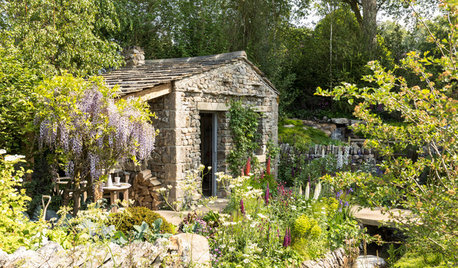
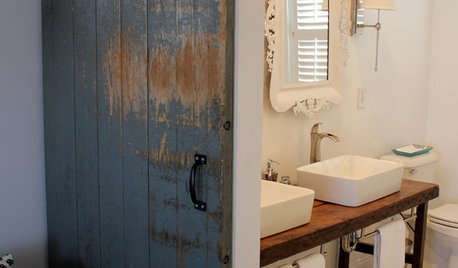

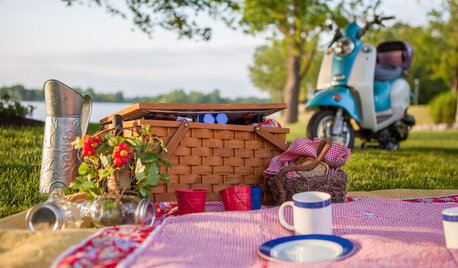
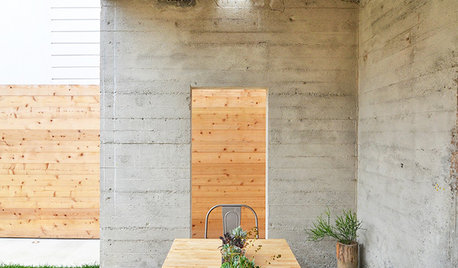
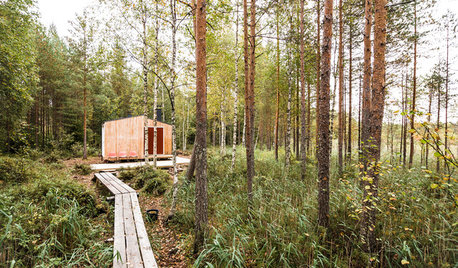






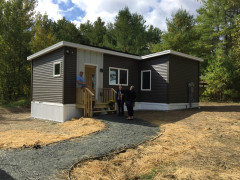
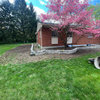

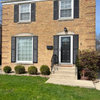
Yardvaark